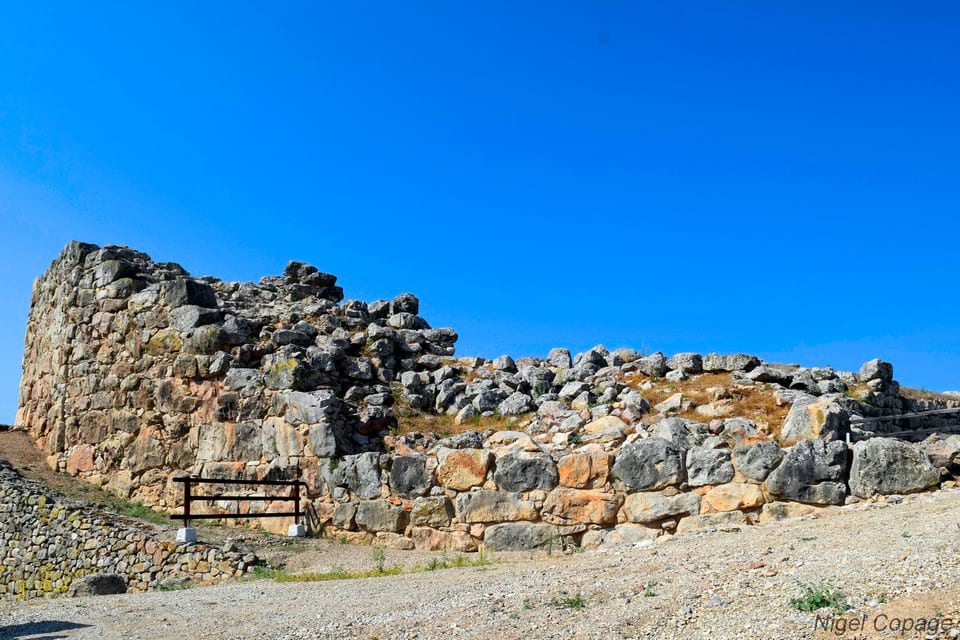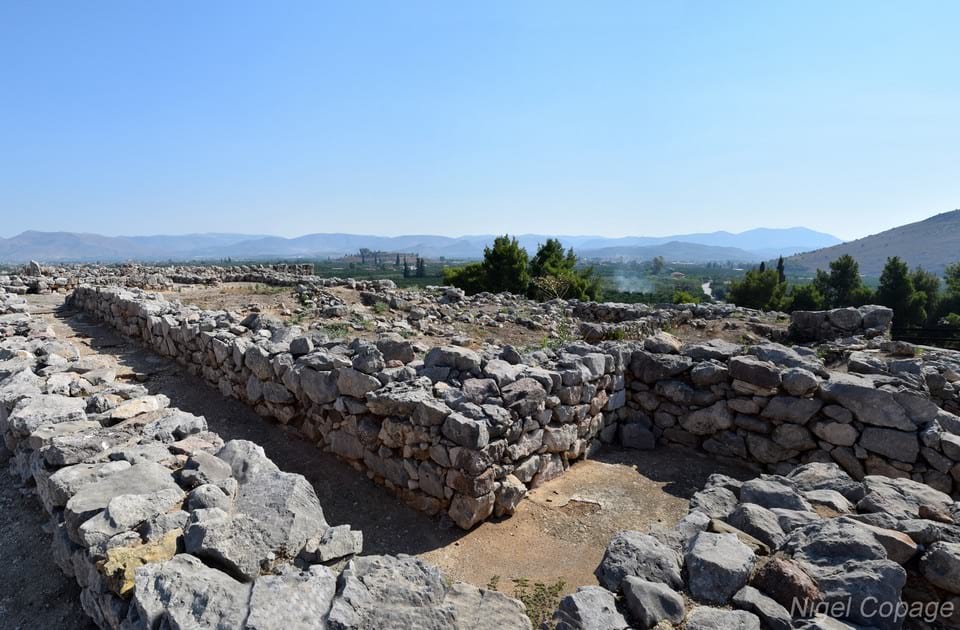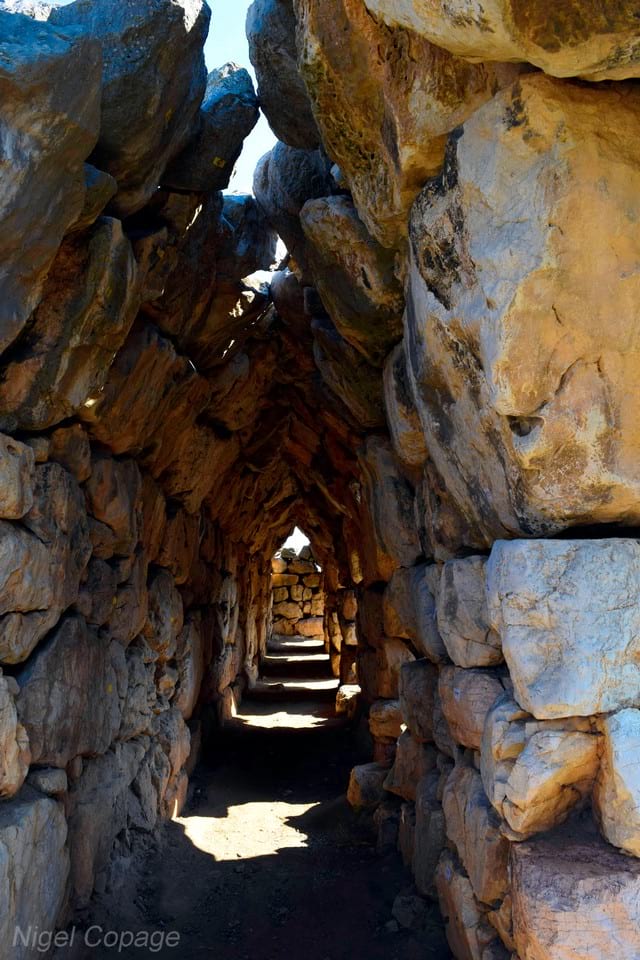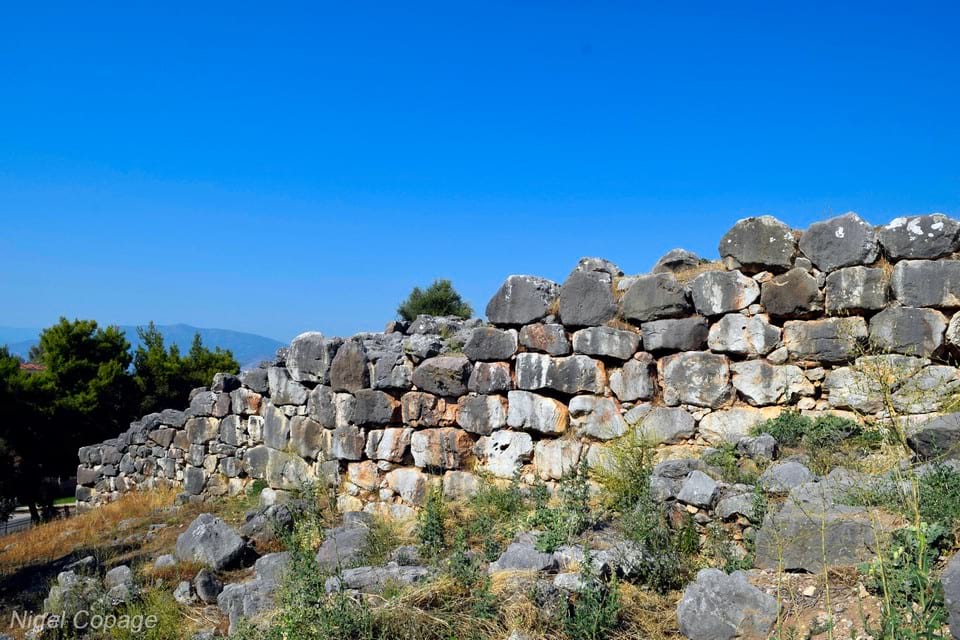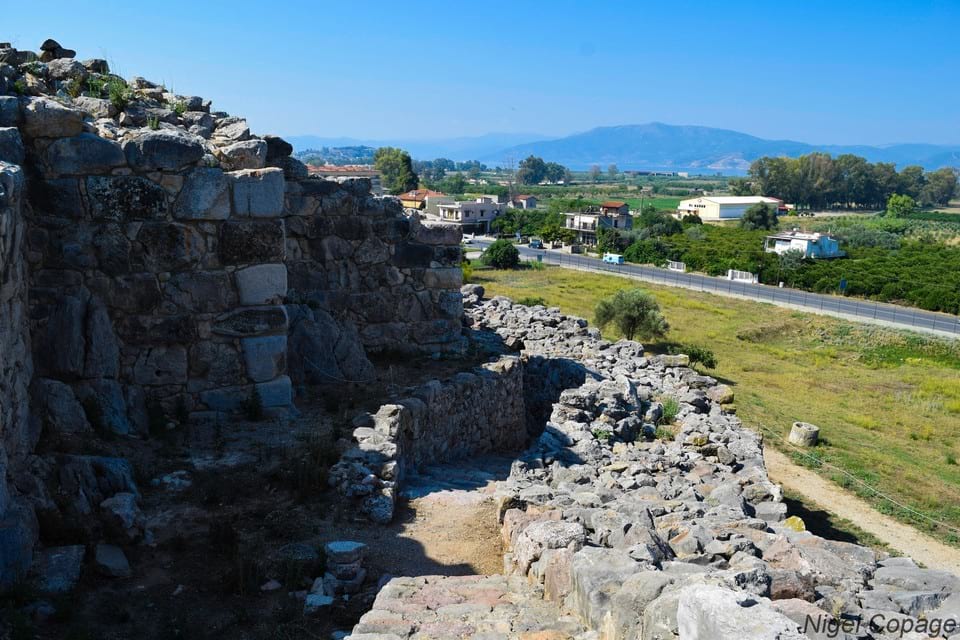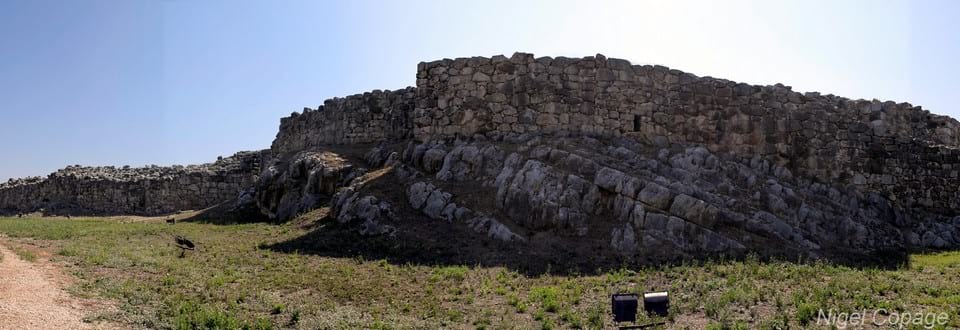
Just north of Nafplion are the well preserved remains of the important hill fortress of Tiryns, an excellent example of the Mycenaean palatial system. Along with its nearby and better known neighbour Mycenae it is recognised by UNESCO as a World Heritage Site.
Mythology
The ancient Greeks believed that Tiryns was founded by Proitus, the brother of the King of Argos, Akrisios. It is also famous as the site where Heracles performed his 12 labours. The city was mentioned by Homer who described it as “Mighty Walled Tiryns” and Strabo who recorded how the Cyclopean walls were built in his book “Geographica”. The Roman poet and mythologer Ovid also wrote about the legendary history of Tiryns.
History
The early Greek geographer Pausanias visited Tiryns in the second century AD and recorded local beliefs that the site had been inhabited for two millennia before the Bronze Age. Support for this was provided by later excavations when evidence was found of human habitation during the Neolithic period (around 5000 BC). Any remains of the most ancient settlements were destroyed during the extensive construction in the Mycenean period but there is firm evidence that in the Early Bronze Age (2500-2000 BC) there were several dwellings around a large circular building on the top of the hill.
Tiryns reached its height between 1400 and 1200 BC when it was one of the most important centres of the Mycenean civilisation. It is believed that it functioned as a port for Mycenae as at that time the sea was just a few hundred metres away.
Along with other Mycenean cities, Tiryns was violently destroyed as part of the mysterious Bronze Age Collapse in the 13th century BC. It continued to be inhabited during the post-palatial period, the so-called Dark Ages, although was now reduced in size to a small village.
Over the following centuries Tiryns began to grow and in 479 BC was even able to contribute a contingent of warriors to fight the Persians at the battle of Plateia. However just nine years later it was destroyed by the neighbouring city-state of Argos.
During the Hellenistic period (around 300 AD) Tiryns became a stronghold once again and during the Byzantine period a church was built on top of the hill.
Excavations
The first excavations of the acropolis were conducted by the German scholar Friedrich Thiersch in 1831, shortly after Greece achieved independence. From 1876 onwards the site was investigated by Heinrich Schliemann, already famous for his work at Troy and Mycenae. Between 1905 and 1920 excavations were resumed by the German Archaeological Institute and at the end of the 1950s the area of exploration was broadened under the supervision of the regional Curator of Antiquities, Nikolaos Verdelis. Then in the late 1960s the German Archaeological Institute returned to the site and uncovered the whole of the upper and lower citadel as well as the Mycenaean town outside the walls and parts of a cemetery dating to the Iron Age. The finds from all these excavations can be found in the National Archaeological Museum and the Archaeological Museum of Nafplion.

